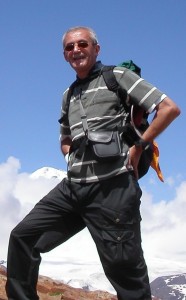
Ask
From 8 to 20 June I will go to Kenya / Tanzania with a group Kilimanjaro to climb. That goes as follows: In six days we rise on average 1000 meters a day. The advice to prevent altitude sickness is max 300m / day. Does it mean that this is a life-threatening undertaking? Or does it save that the extra day of rest is built in on day 3?
Below our climbing schedule:
| June 9 | Arrival in Nairobi |
| June 10th | Nairobi |
| June 11 | Tanzania Moshi |
| 12 June | Marangu Gate 1829 m, Mandara hut 2750 m |
| June 13th | Horombo hut 3780 m |
| 14th of June | Rest day Horombo hut |
| June 15 | Kibo hut |
| June 16 | Gilman's point, Uhur peak 5895 m, Horombo hut 3780 m |
| June 17 | Marangu Gate 1829 m, Moshi |
| June 18 | Nairobi |
Answer by dr. Han Willems,
our expert in the field of altitude sickness:

Your questions
1 / Many people get the first three days (until Horombo) only mild symptoms of altitude sickness (headache and so on), although there are people who are very sensitive and who quickly become very ill. They do not reach the top. The extra day of rest on June 14 is indeed very sensible, provided that you also use it to rest and not just to do a lot and make it a tough and strenuous day. Even if you have no complaints, I advise you to walk around the area that day at most.
2 / Between 12 and 15 June you rise almost 3000 meters. That is on average almost 750 meters per day, so much too much. For this reason we see a lot of altitude sickness on the Kilimanjaro. The greatest risk of altitude sickness is in day 4 of the climb, if you climb from 3780 to 4725 meters in one go. If you start this day completely fit and free of complaints, and you keep the walking pace reasonable (so do not want to be the fastest, who often endure with altitude sickness) it should be possible, provided that you keep listening to your body and take timely action in the event of complaints. If you have a headache (that does not respond to bruges or acetaminophen) before that climb, I fear that you will get into trouble, you should not go further. Of course many will Diamox as a means to prevent altitude sickness. This is a medicine that is only available on prescription. Given your schedule, including the rest day, I don't think that is necessary. If you still want to use it, I advise you to ask your doctor if you can take this medicine. The latest data indicate that a tablet of 250 mg per day (or twice a half of 125 mg) already greatly reduces the risk of altitude sickness (but unfortunately not for everyone, it is certain that the still officially recommended dose of twice swallow 250 mg). You start swallowing on 11 June and continue until 15 June. Sometimes it becomes the second choice Ginkgo Biloba (an anti-oxidant) recommended. Some studies show that altitude sickness helps to prevent, others again strongly doubt this. However, it is a harmless agent without side effects in the dose to be used, which can be purchased at the drugstore. Take the cheapest version, sometimes manufacturers add all sorts of expensive and unnecessary items. The tablets must contain about 120 mg of standard extract, and you take one of them in the morning and in the evening, also starting on the day of departure and continuing until you reach the highest point, longer will not hurt here anyway.
3 / If you are still free of complaints on 15 June, you will no longer have altitude sickness, because you will immediately descend again after you have reached the top. Note: it can be very cold upstairs, also bring a Balaclava (balaclava for your head), it helps enormously to prevent heat loss through your head even in extreme cold.
Addition of Altitude Dream:
The Kilimanjaro is a beautiful climb but the routes to the top are actually all very fast. It is also not just possible to take longer because the entire area is a national park with strict guidelines and a considerable amount that must be paid per day.
For the above reason it is no superfluous luxury to acclimatize at home up to date by sleeping in one altitude tent. In this way, the chances of getting altitude sickness go down considerably and the whole trip will be a pleasant experience never to be forgotten. Kilimanjaro without the view from the top is no fun. So make sure you are not one of those 40% that does not make it to the top. With 4 weeks of acclimatisation to the altitude at home, it can hardly go wrong.
Enjoy the atmosphere video of one of our Kilimanjaro customers below
